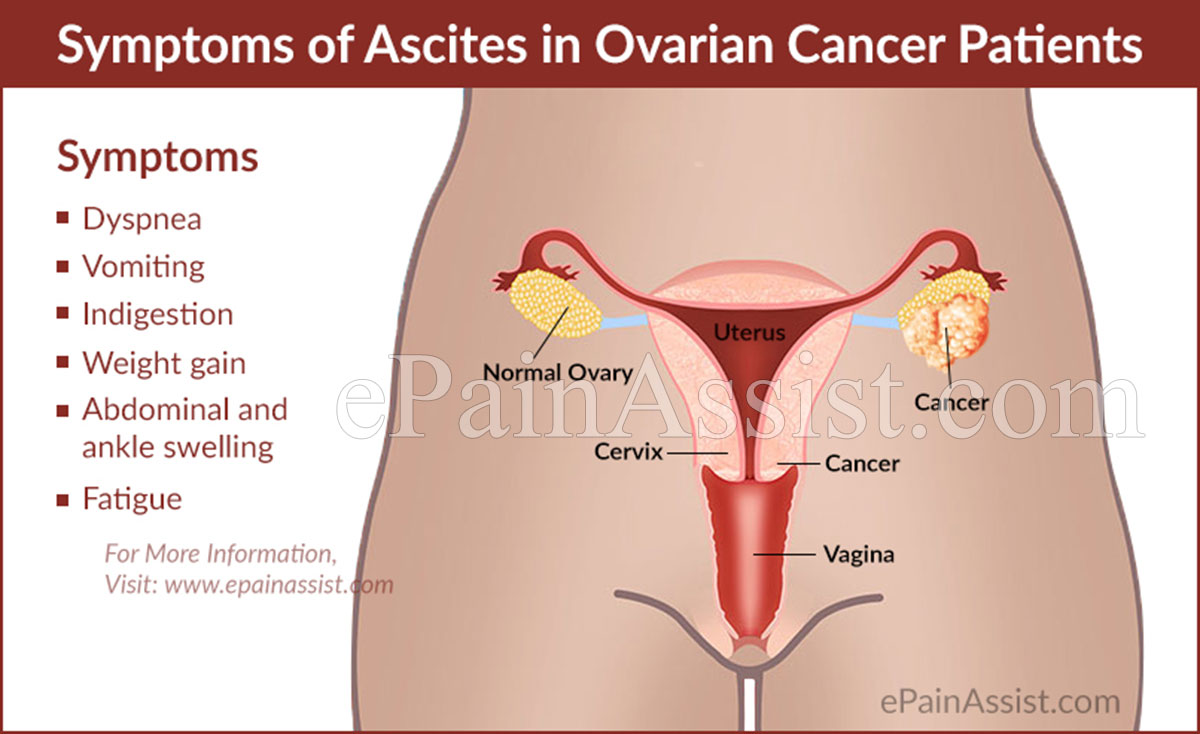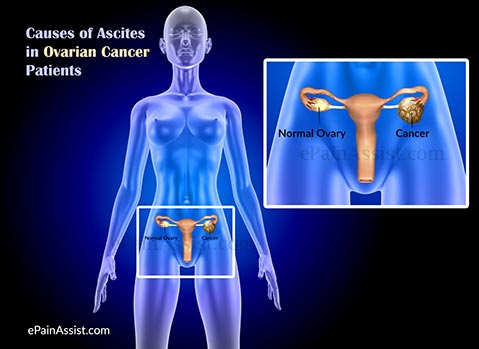Ovarian cancer is the fifth most deadly form of cancer in Europe and America. Ovarian carcinomas can spread through different process like hematogenous dissemination, local extension, intraperitoneal implantation, and transdiaphragmatic passage etc. In the commonly detected intraperitoneal dissemination, malignant cells appear to be embedded anywhere over peritoneal surfaces though mainly in sites of stasis along the peritoneal fluid circulation. The most common form of cancer in ovary is EOC or epithelial ovarian cancer. At least 1/3rd of the cases of epithelial ovarian cancer are associated with the formation of ascites. Ascites is the medical term for fluid buildup in the abdomen. It’s generally a voluminous exudative fluid having cellular fraction consisting of ovarian cancer cells, mesothelial cells and lymphocites. The neoplastic cells present in the ascites are mainly found to be spheroids but single cells or aggregate of cells. It’s found to contribute to the spread of cancer to other sites also. It has been proved that spheroid shaped ascites remain attach to extracellular matrix through a transmembrane receptors called β1 integrins, indicating that this process may play a part in the propagation of the disease.

Signs and Symptoms of Ascites in Ovarian Cancer Patients
Ovarian Cancer can grow enough to block the bowel partially or completely. There are many symptoms that seem quite common in ovarian cancer and ascites formed there upon. In fact many symptoms of ovarian cancer are further aggravated when ascites is formed. Some common symptoms of ovarian cancer are as follows:
- Sense of fullness in abdomen
- Pain in abdomen and lower abdomen
- Vomiting
- Constipation
Ascites is associated with lots of physical discomfort. Ovarian Cancer patients when develop ascites show the following signs and symptoms:
- Weight gain
- Abdominal and ankle swelling
- Sense of fullness or bloating
- Sense of heaviness in the abdominal and lower abdominal regions
- Indigestion and loss of appetite
- Nausea or vomiting
- Hemorrhoids, i.e. painful swelling of veins near the anus
- Fatigue
- Shortness of breath or dyspnea
For ovarian cancer patients, onset of ascites makes them feel very uneasy and they often describe it as the worst ever feeling during their cancer detection and treatment period.
Causes of Ascites in Ovarian Cancer Patients
In a normal human body, capillary membranes present in the peritoneal cavity constantly create free fluids to keep the serosal surfaces of the peritoneal lining lubricated to provide a free passage of fluid between the peritoneum and the adjacent organs. 2/3rd of this peritoneal fluid is reabsorbed into the lymphatic channels of the diaphragm and is propelled into the right subclavian vein by the negative intra-thoracic pressure. Presence of ovarian cancer increases the formation of peritoneal fluid. This is induced by the tumors due to the increased leakiness of microvasculature inside the tumor and obstruction of the lymphatic vessels.

As a result, accumulation of fluid far exceeds fluid re-absorption, which results in the formation of ascites. Researchers have found that the flow of ascites within the peritoneal cavity largely dictates the way of dissemination of ovarian cancer.
Some physiological factors aggravate the process, i.e. the formation of ascites and dissemination of ovarian cancer. These factors are gravity, organ mobility, diaphragmatic pressure, and recesses formed by key anatomical structures.
The three most common intra-abdominal sites of ovarian cancer development are the greater omentum, right subphrenic region, and pouch of Douglas, areas which have easy access to ascites. Isolated ovarian tumor cells carried by ascites primarily colonize to these distant sites. Thus dissemination of ovarian cancer and formation of ascites are mutually inclusive.
Diagnosis of Ascites in Ovarian Cancer Patients
Sometimes even the oncologist having wide experience in this field find it difficult to confirm that the ascites is present in an ovarian cancer patient. Normally, an ovarian cancer patient is asked for certain physical examination when she complains of abdominal fullness, loss of appetite, continuous vomiting and sudden weight gain.
Here are some common diagnostic methods used in detecting ascites in ovarian cancer:
- CBC: A complete blood count or CBC is helpful in looking for potential abnormalities, anemia, and indirectly, liver function. Several other blood tests are helpful in assessing electrolyte balance, liver and kidney functions, and also the amount of protein in the body.
- Paracentesis: If a patient is suspected with ascites, paracentesis is advised to get samples of the fluid for medical analysis to assist in the diagnostic process. Removal of the fluid for paracentesis may assist with symptom control.
- Imaging Diagnostic: Imaging diagnostics like CT scan and MRI are often used to detect presence of fluids. However, physical examinations and imaging diagnostics cannot differentiate between a benign and malignant ascites.
Treatment of Ascites in Ovarian Cancer Patients
Diagnosis of ovarian cancer is very tough at the initial stages due to minimal number of signs and symptoms associated with the disease. For this reason ovarian cancer is often termed as silent killer. In most of the cases ovarian cancer is detected only after the development of ascites. Right after diagnosis and confirmation of ascites in ovarian cancer patients, medical facility is primarily provided for palliative care for the patients. The target of palliative treatment for ascites is to relieve the symptoms that cause pain and discomfort in a patient.
Treatment of ascites is done mainly by drainage, and rarely by diuretic therapy. On the other hand if it’s a recurrent problem then permanent indwelling catheters or peritoneovenous shunts are applied. There is little evidence around the use of drainage catheters to attain optimal drainage with most research recommend the use of peritoneovenous shunts. Patients suffering from significant ascites derive symptomatic relief from pre-cutaneous drainage.
Here are some common treatments applied on ovarian cancer patients suffering from ascites:
- Paracentesis: Paracentesis is done under ultrasound control to identify the entire pool of fluid. Drainage catheter system is placed guided by ultrasound to fix the most appropriate area where the catheter can be introduced for maximum drainage.
- Indwelling Catheter: This is inserted when excessive fluid is produced on recurrent basis. This is a permanent set-up with which patients are released from hospitals.
- Diuretic Therapy: This treatment helps in draining fluids and water from the body; however its success in malignant ascites is still not established. Application of diuretics such as spironolactone is a common clinical practice everywhere. Experts opine diuretics therapy was unlikely to mobilize fluids much and weight loss is mainly due to loss of fluids from outside the peritoneal cavity, which may lead to severe dehydration in patients.
- Peritoneovenous Shunts: It is normally applied on ovarian cancer patients with recurrent ascites. This process drain out fluid in to vena cava where a one way valve prevents reflux of blood.
- Antineoplastic Therapy: Medicines with antineoplastic properties, like oxaliplatin is used in the treatment of ovarian cancer. Ovarian tumors which are still responsive to antineoplastic therapy are likely to prevent further development of ascites.
The experts in the field of gynecology, oncology and surgery normally team up to decide the treatment process for each individual ovarian cancer patients having ascites.
Conclusion:
The probability of dissemination of ascites in case of ovarian cancer is very large. A number of treatment options are available to take palliative care mainly to reduce pain, uneasiness and vomiting tendency in a patient. Availability of too few data and information worldwide regarding this disease is the main hindrance before more intensive research and establishment of better treatment procedures. Many antineoplastic agents have been developed but yet to be applied due to lack of endorsement from appropriate authorities. A timely detection of ovarian cancer can reduce the chance of formation of ascites or at least can prevent further dissemination of the disease.
